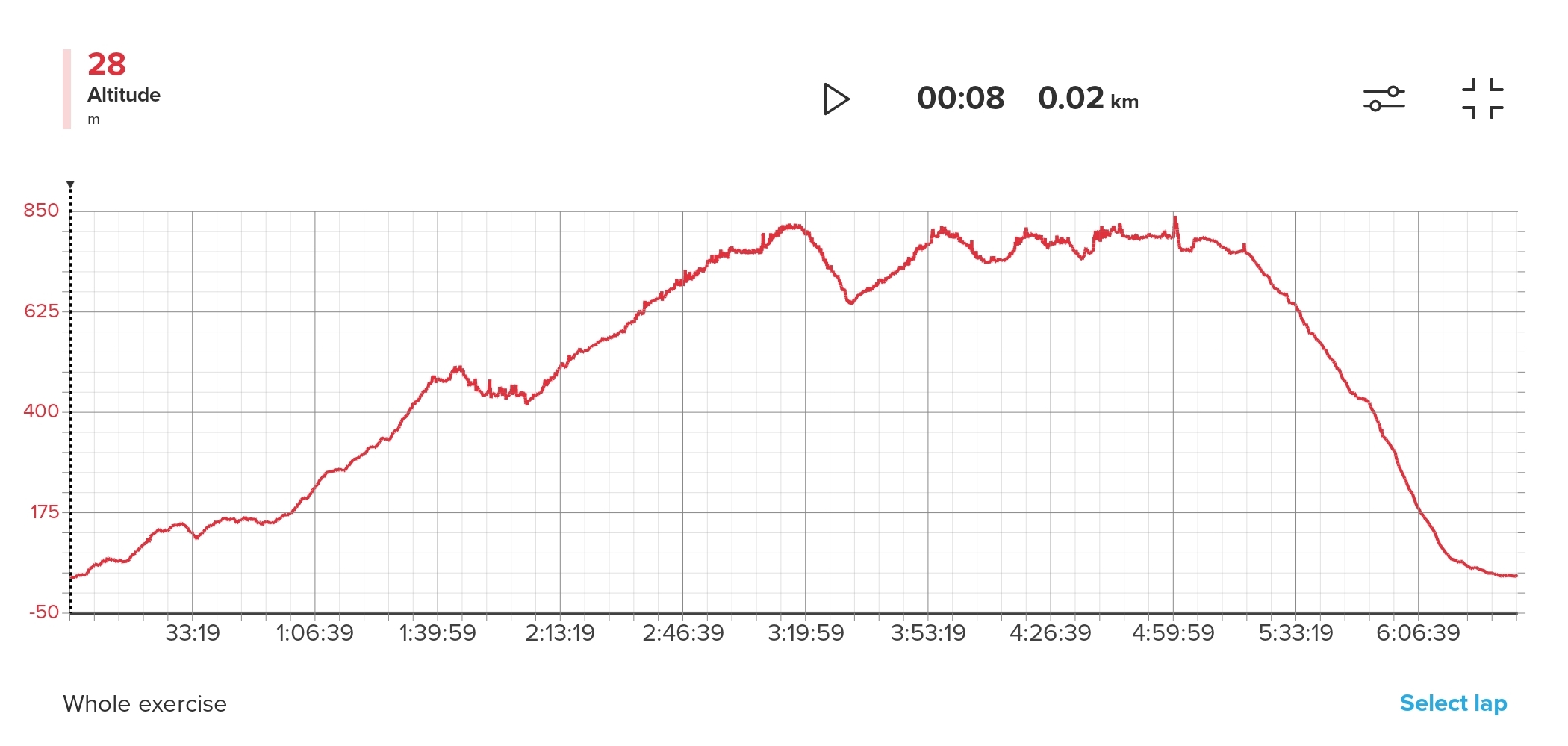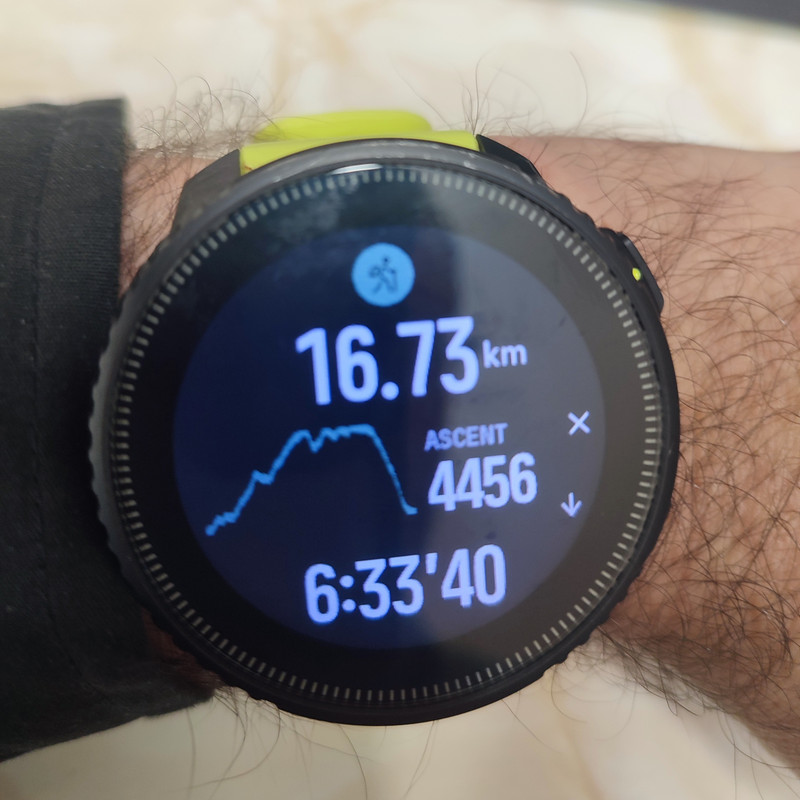Suunto vertical ascent/ descent totally incorrect
-
I never had issues with a Suunto or other watch while cycling. Neither on the handle bar nor on the wrist. And I am on the bike every day and often have 500 to 1000 meters of ascent.
An easy way to check it is in Strava the auto correction or a gpx viewer.
I’m glad to have no problems with ascent/descent.

-
@pilleus
do you have a bike with dropper bars? -
No, why should I torture myself? If I want to go fast, I ride a velomobile or a fast recumbent bike …

-
@pilleus
you made me notice that I wasn’t precise enough. on the roadbike the hand position is often different to any other bike handlebar and hence the position of the sensor holes… -
Yes, but I think it doesn’t matter. On my recumbent bike and trike I often let my arm hang down and the sensor holes are directly in the wind. No negative impact so far for the reading of the barometric pressure.
-
Strong winds can affect the air pressure around the sensor, which can result in an incorrect barometric altitude reading. Typically, an increase in wind speed results in lower air pressure, while a decrease in wind speed can result in higher air pressure.
If I have the severe weather alarm switched on in my Suunto watches, then warning messages should constantly come during the changes if the wind so often affects the barometric altitude measurement.
Has anyone noticed this yet?


-
@pilleus
yes and no.
yes, I have received several storm alarms since I have my Vertical.
no, it never happened to me due to winds, because it needs a certain pressure drop over a specific time -
@freeheeler Ditto - Several storm alarms with SV when there have been storms coming, and none at any other time.
-
@pilleus In my case, i.e. for activities such as hiking, mountaineering, trekking, what you write about usually does not matter that much (directly) because the current altitude is more or less correct (we are talking about mountainous terrain, so some inaccuracy does not matter), I can can accept them even in strong winds.
The problem is that there are too many of these results, all with some small error because this is how the barometric altimeter works, which add up, giving a completely incorrect total result.
With little wind, these deviations are not large enough to significantly affect the overall results. In stronger winds it is very visible - sometimes over 1000 m additional climbs.
Instead of fighting the wind, which is impossible anyway, it is better to simply introduce a filter that would remove the noise of too many results.
To start with, the simplest filter to remove some unnecessary altimeter’s records, and then over time it can be improved by introducing more sophisticated algorithms.
This could be done as an additional option to be turned on during or after activity (because it would certainly reduce the accuracy of the measurements somewhat), when it is clearly visible to the naked eye that the elevation sums are completely wrong. -
@maszop said in Suunto vertical ascent/ descent totally incorrect:
The problem is that there are too many of these results, all with some small error because this is how the barometric altimeter works, which add up, giving a completely incorrect total result.
May be I do not understand the problem, because it never happens to me since I use watches with barometer and gps (cycling, mountain biking, walking, running, in different areas, the Alps included).
Do you use only barometric altimeter without gps?
-
@maszop Ski Mountaineering on the uphill is as slow as hiking. Yes, I am often off trail, I scramble up 4300m peaks in the summer and am often out for 7 to 8 hours. However, in the winter it is much windier, sometimes so windy that it can be difficult to see from blowing snow. I already asked several questions for potential fixes, have you tried these?
-
@Brad_Olwin This applies to 2 Suunto watches, 9PP and Vertical. A lot of time has passed since the release of Suunto 9 Peak Pro and this problem repeats very often in both watches, regardless of resets or cleaning (these were brand new watches).

Suunto Vertical shows 1553m total climbs. Totally absurd in very strong winds.
Link to this activity (I had to stop further hiking due to the gusty wind):
https://maps.suunto.com/move/maszopmz/65b4e463aecad96a9da9c27f -
@maszop I do not have a SV yet but I have a S9B and have seen a very few times this issues and all of them match with the potential issues. If you have this issue with two watches could be some factor that affects equally both watches. I mean, I can complain of some things of Suunto but ascent and altitude is 99.9% of the times spot on. Moreover Suunto is recognized to nail it with this.
If I were you I would try to understand what could affect to this. As you said doesn’t happen always, so if it is a software bug and your activities are very similar this should happen always, shouldn’t it? I also understand that when you are at home the baro trend is logical, not fluctuating randomly?
Do you know the altitude in the summit? It is correct in the watch when you are in the summit? Are you leaving the watch do its magic with Fusedalti (full autoimatic)? How is the GPS track, do you have always GPS signal? Could be, that for some reason, when you hike you cover the baro sensor? Rain? Snow? At the end there is no much more secret from user side with this technology. -
@cosme-costa I used Suunto 9 Baro and the problem only occurred a few times in the same weather conditions. Strong, gusty wind, some rain, generally nasty weather.
In the case of 9PP and Vertical, this problem basically always occurs under such conditions.During the same hike, my friend went a little further with his 9 Baro and his watch showed about 900m of ascent. Probably a bit too much too, but not as absurd as Vertical with 1553m.
Apart from those cases with bad weather (where the altimeter shows basically correct values on the peaks anyway), there are no other problems or errors - in good weather, on a daily basis, etc.
-
And again.
Suunto Vertical shows 4456m ascent instead of about 1400. Wind about 60km/h.

-
@maszop I just did a very windy run and had overestimates as well in elevation gain. Not as bad as yours but it happened on the Vertical. It does not happen often to me and I might consider putting the watch under a sleeve as this would likely help. I was changing directions often so the wind hitting the sensor was not all the time. My graph has the issues yours does with lots of little spikes. It can happen, not sure much can be done about this as I have seen the same issue with an Apple Watch Ultra. The sensors have to be sensitive to detect small changes in pressure; enough wind in the right place will affect it. Maybe Suunto can make this better, I am not sure if that is possible.
BTW I have had worse issues like this on the 9baro and less issues with the Vertical, the sensor is in a much worse position on the 9baro.
I can dig up the data if you like. -
@Brad_Olwin Unfortunately, covering the watch with sleeve does not help. I’ve tried various methods, keeping it in my pocket, under my sweatshirt, under my jacket, completely outside and there are always strange things happening in strong winds.
This is a link to the activity, I manually changed the ascent and descent to the correct ones, recorded once in calmer weather.
https://maps.suunto.com/move/maszopmz/65e36100073ba655aff7e2b7Here is the result from the watch:

I wonder if a simple (optional) filter would be enough to normalise (flatten these results) - e.g. to be turned on when we observe such drastic anomalies.
-
@maszop
with a little tone of humour (but not totally silly idea ), what do you think about testing with covering baro hole with something like the furry windshields, used to protect micros from noises od wind “pressure” ?
), what do you think about testing with covering baro hole with something like the furry windshields, used to protect micros from noises od wind “pressure” ?
you may become the first user of SuuntoVertical Furry edition
-
@Mff73 If it works with microphones, maybe it will also be suitable for watches

-
Strange about wind effect : I have used my vertical several times in very windy conditions and never observed such elevation errors.
(I didn’t know where to put this so I put it here : I wanted to notice that SV works awesomely well under clothes/gloves, even in very cold weather with big gloves + 3 layers => that’s a point I wanted to notice. My A3P and my S9b were very poor in this case with elevations errors and GPS accuracy loss).